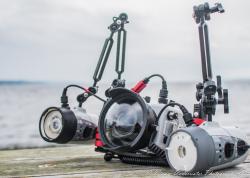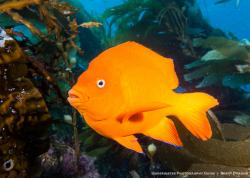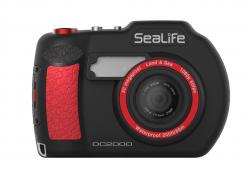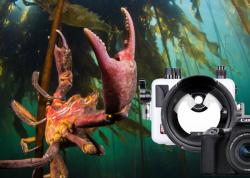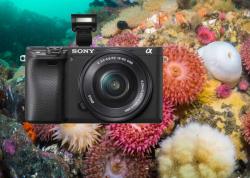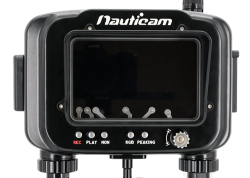Why the Canon EOS R5 is Still Our Favorite Underwater Camera a Year Later
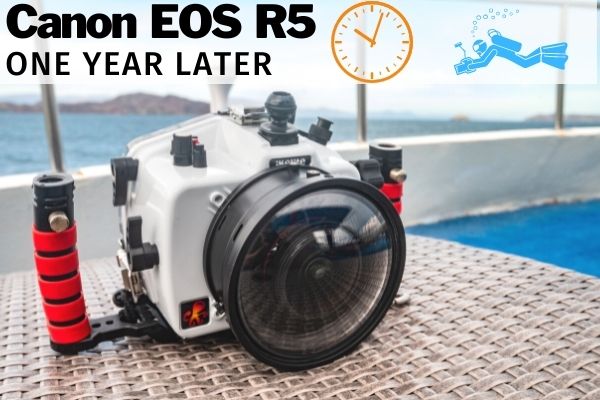
In today's fast-moving camera market, it's very rare that a camera has significance for over a year. But a year later, the Canon EOS R5 is still, by far, our favorite all-around full frame camera for underwater photo and video. In fact, it will likely take our top spot for at least another year or two as supply chain disruptions brought on by the covid-19 pandemic slow down R&D across camera manufacturers.
Despite some fierce competition from Sony with the release of the Sony A1, the R5 remains the best value choice of a professional camera for underwater photography. Check out our full comparison of the Sony A1 vs the Canon R5.
After having had the opportunity to shoot the Canon R5 extensively over the past year in both warm water and cold water dive destinations, I'd like to share my thoughts on what I love about this incredible camera....and a few of the quirks that I'm not very fond of. In particular, I would like to focus on a few of the experiences I've had diving with the camera in our most recent underwater photoworkshop to the Sea of Cortez.

Support Our Content and Purchase a Canon EOS R5 Underwater Housing at Bluewater Photo:
Nauticam Canon EOS R5 Underwater Housing
Ikelite Canon EOS R5 Underwater Housing
Sea & Sea Canon EOS R5 Underwater Housing
Aquatica Canon EOS R5 Underwater Housing
Isotta Canon EOS R5 Underwater Housing
More Canon EOS R5 Content:
Top Canon EOS R5 Underwater Settings
Does the Canon EOS R5 Overheat Underwater?
Traveling With the Canon EOS R5
Traveling with the Canon R5 is a breeze. You get all the benefits of a nice, compact mirrorless body plus a few added luxuries. For one thing, the screen is full articulated and can be turned inward so that it doesn't damage in transit. I usually just put my camera in my housing when I fly, but it's a nice feature if you are backpacking with the camera. But for me the crème de la crème of design on the R5 is that the shutter comes down when the camera is off to protect the sensor behind it. During my travels to particularly dusty locations (like the Mexican desert), I was virtually free of sensor dust. You no longer have to worry about where you are changing lenses or if your body cap comes loose while moving locations.
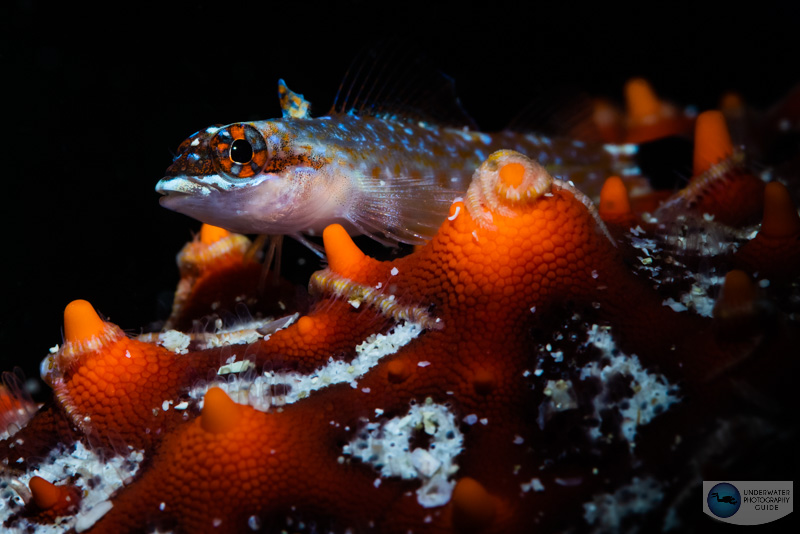
My Thoughts On the R5's Ergonomics and Design
All mirrorless cameras are designed pretty similarly these days. I wouldn't say the ergonomics on the R5 are the best or worst compared to other similar models from Nikon and Sony. There is slightly more customization than with the Nikon Z series but less compared to the Sony alpha series. The menu system on the R5 isn't particularly bad, but it's now worse and less organized than the one in the Sony A1. Be sure to check out Bluewater's full Canon EOS R5 and R6 settings article.
Button and Dial Layout
When it comes to the button and dial layout on the R5, this camera is all about the dials. I love that you can control your full triangle of exposure with dials. But at the same time, I hate that you have to scroll through settings using the dials as there is no d-pad (and some housings aren't compatible with the joystick). That being said, as soon as your muscle memory kicks in, you'll leave behind any frustrations and operating the camera becomes quicker because of the dials. So leave some time to get used to the muscle memory required to control the R5 with your dials. That brings me to the next point - the joystick is the easiest way to move your focus points, but not all housings have compatibility with it. For housings that do, it will be in the form of a d-pad which can also sometimes be clunky. I actually recommend getting used to moving the autofocus points around with your dials for the quickest placement. But again - it takes muscle memory.
SD vs CFexpress
The Canon R5 has compatibility with both SD and CFexpress type B cards. If you are going to be doing any kind of burst shooting or video shooting with the R5 I highly, highly recommend getting a CFexpress card. They're expensive, but these cards write and read speed quicker than SD cards. This will extend your image buffer and won't cause any lag in your video shooting. More importantly, it's very difficult to corrupt a CFexpress card compared to an SD card. If you do get an SD card, I would recommend a UHS-II card which will also have relatively fast read and write speeds. Because the R5 only has one card slot for each, you won't get redundancy for underwater video, but you will get some redundancy for underwater photos.
What I LOVE about the Canon R5
Let's get on to what I really love about the Canon R5 - because there is a lot to love. For my full overview, be sure to check out our Canon EOS R5 review. In the meantime, these are some of the camera's features that struck me as being either revolutionary or enduring technology that will benefit shooters for years to come...
One thing I'm not going to talk about much here is image quality. It's phenomenal, but these days, every high end camera on the market has phenomenal image quality. Camera tech has come to a point where I'm now looking for tools that make my photography more about composition and less about missing the shot.
The Autofocus - And yes, animal eye AF works on fish!
I can't stress enough how incredible the autofocus is on the R5. I'm constantly blown away by how little I have to monitor what the camera is doing. Often I can point, shoot, and the camera nails it. At times, it's not quite as fast as the Sony A1, but I also haven't used many RF lenses with the R5 underwater as I wait for better RF glass to hit the market. I'm particularly excited to soon be taking the new Canon 100mm RF underwater.
The autofocus tracking system is so good on the R5 that combined with the AF servo mode (continuous autofocus) it has become my default choice. I use it for both macro and wide angle and it rarely fails to keep up with a moving point. Most importantly, it does a better job than I could ever do moving the AF point around with dials or a d-pad. It's an amazing feeling when you can lock your focus box over your subject's eye and then forget about it as you recompose (and for this I highly recommend using your backbutton autofocus).
But perhaps the most revolutionary aspect of the R5's autofocus is the animal eye autofocus tracking system engages and takes over when it senses a fish eye. When I shoot macro and photograph fish like blennies and gobies, I've found that the animal eye autofocus tracking engages about 80% of the time! That's incredible. Not even the Sony A1 can do that. Take this signal blenny for instance. It was jumping around and the R5's eye autofocus tracking system stayed locked onto its eye the whole time...
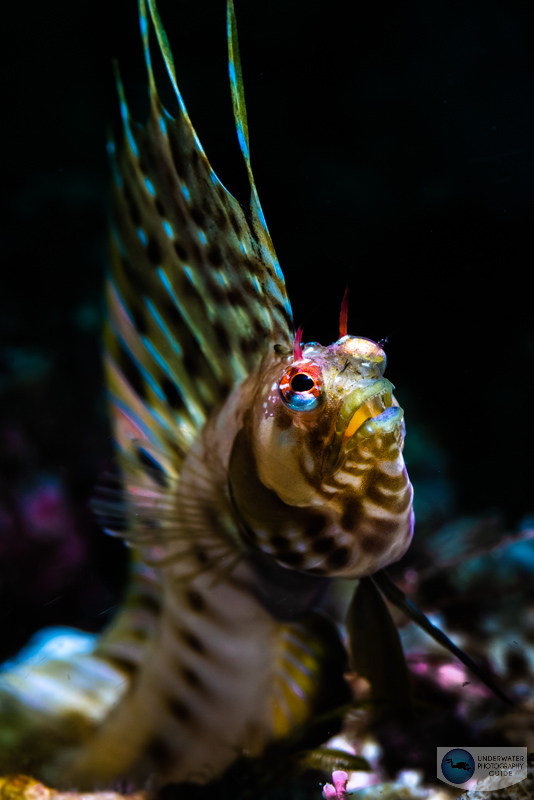
When shooting wide angle the animal eye autofocus tracking is much less effective. I often only get it to engage when an animal is very close to my dome port. Otherwise, the eyes on fish will be too small for your camera to track. When photographing sealions, I found the animal eye af tracking engaged about 10-20% of the time. This being said, the normal af tracking system had no problem locking on to fast sealions and following them around as they zipped by.
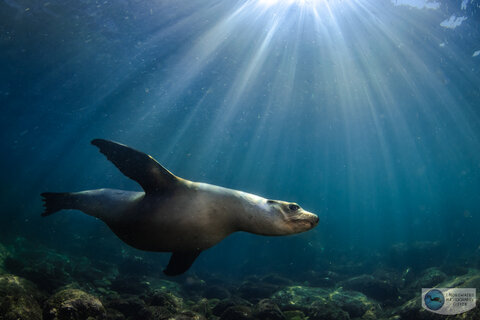
The Best In-Body Image Stabilization Ever
I used to think that in-body image-stabilization (IBIS) was a nice feature to have, but not essential. After showing me what IBIS can accomplish, Canon has me convinced that good IBIS is going to be a necessity pretty soon. The R5's IBIS system is the best in the world. Combined with optically stabilized lens, you can take handheld photos without motion blur at shutter speeds 8 stops slower than what would be acceptable on a camera without IBIS. It's incredible. For underwater photography, that means that you are guaranteed good, clean blue or green backgrounds in low light as long as your subject is still. This is because you can drop your shutter speed down to 1/8th of a second or more and still get crisp photos! However, I do find myself doing this not all that frequently because most subject I shoot move.
For shooting underwater video, good IBIS like this is a game-changer. I have been able to easily shoot handheld macro video with a 100mm macro lens because the stabilization is so effective. I've never been able to get useable handheld macro video with a 100mm lens in the past. It really changes the game when it comes to run-and-gun video shooting and you're much more likely to get multiple useable clips in a dive rather than having to spend time setting up tripods.
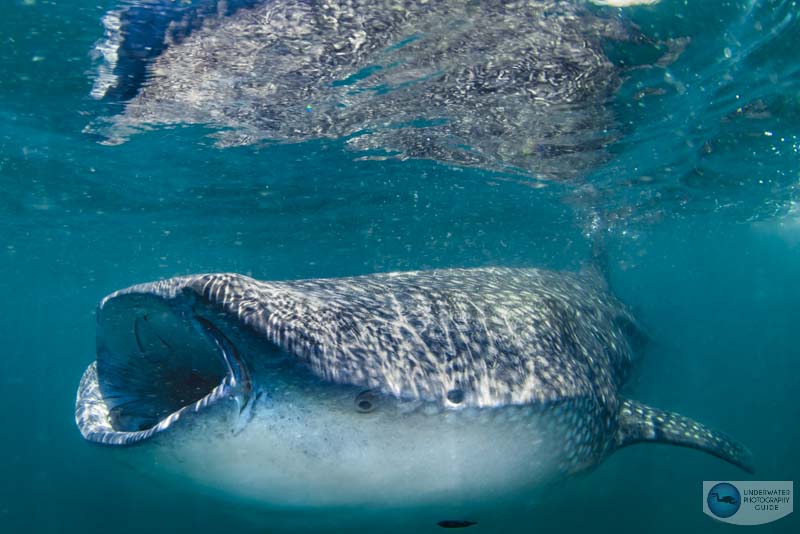
4k/120fps Video for Fast Scenes
Most the video I have shot with the Canon R5 is at 4K/60p. That being said, I've really been enjoying shooting at 4K/120p in order to capture incredible animal behavior in slow motion and stabilize video where I may have been moving around a lot. However, I have run into some overheating at this setting in warmer water (more on that below). One of my favorite features of the slow motion setting on the R5 is that it saves the file in slow motion at 30fps. This makes it easy to transfer and process in post processing.
8K/30fps Video for Cropping
Considering the lack of readily available 8K screens, 8K video isn't a very practical feature at a first glance. However, it's an incredible feature to have on a camera if you intend to crop the video down into 4K. I've used 8K video to create "b roll" footage without needing a second camera! I've also been able to zoom into the details of a nudibranchs rhinophores, and capture supermacro subjects more easily using 8K video.
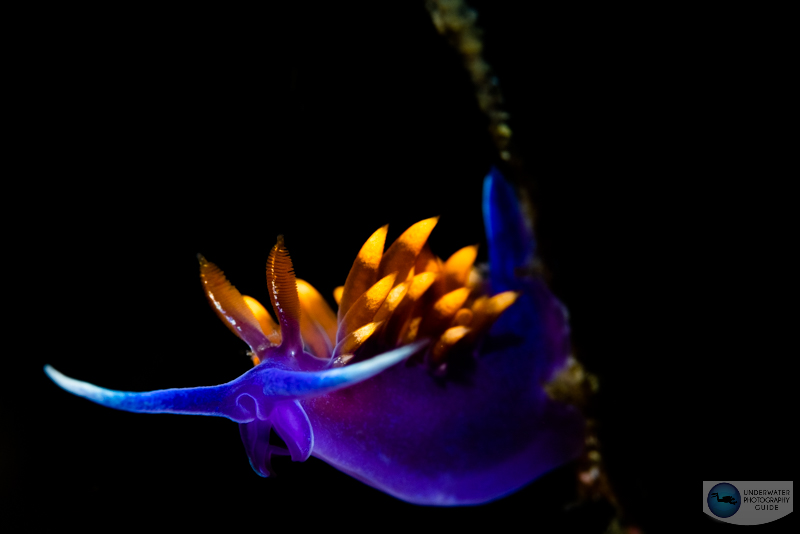
The New Canon LP-E6NH Battery
One of my biggest complains of the original R5 when it first came out was the battery life. However, Canon has introduced a new LP-E6NH that has extended battery life by 14%. I highly recommend getting one. It made the battery just right for shooting photos and video on a liveaboard, 4 dives per day and I never had to change the batteries throughout the day.
Low Light Performance
The Canon R5 focuses so well in low light that I sometimes forget to use a focus light. Or I leave it off so as not to scare away critters. But beyond autofocus, I have to say that I'm quite impressed with the image files shot at higher ISOs. The noise is minimal and it's very easy to edit out of my files (as compared the files I get on the Nikon Z7II).
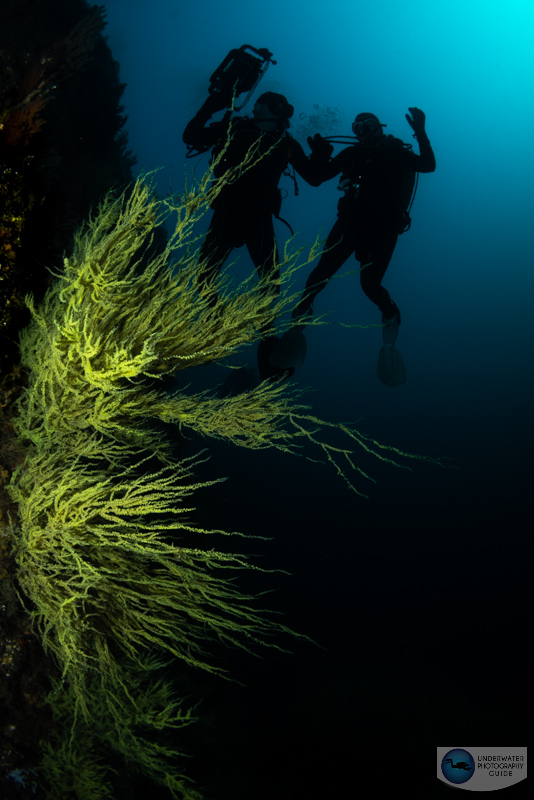
What I don't love about the Canon R5
As with every camera, there are definitely small quirks that could be fixed. None of these quirks have ruined a dive trip for me, but there is definitely room for improvement in the next Canon camera.
Overheating (yup, it does happen)
Overheating was a big issue for Canon's PR team when the R5 first came out. Although firmware updates helped extend film times, I have run into overheating once while filming underwater. Admittedly, I'm not as into shooting video as I am photos. In this particularly situation, I was shooting heavily for three dives. Towards the end of the third dive, I shot 4k/120p video for 5 minutes in 82F water and my camera overheated. Often with the R5 shooting photos and video will contribute to overheating over time. After enough filming this can compound and overheat the camera. It happens rarely but certainly seemed to be more of an issue in warmer water as I never had any issues shooting in colder water. All my filming was done in an Ikelite R5 housing. Check out my full overheating test here.
Rear Curtain Flash Setting Needs a TTL Trigger or Converter
This was a weird quirk that I learned about the camera when I was trying to take slow shutter motion blur photos in the Sea of Cortez. Apparently, it's not possible to turn on your rear (second) curtain sync setting unless you have a Canon flash. The only way to get around this with strobes to get a Canon TTL trigger or TTL converter. So if you want motion blur to be behind your subject when you're doing slow shutter photography, I would recommend looking at TTL options.
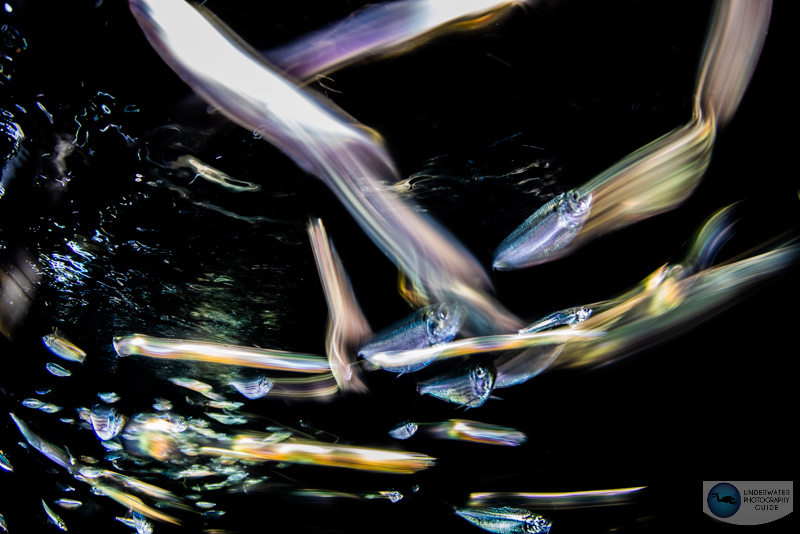
Switching Between Manual Photo & Video Modes
Switching between photo and video modes is annoying - it's a two step process. You have to hit the mode button on the top dial and then you have to hit "info." It's not the end of the world but I've definitely missed behavior when trying to switch to video mode in an underwater housing. I think this is something where Nikon has got it right but Sony and Canon have not.
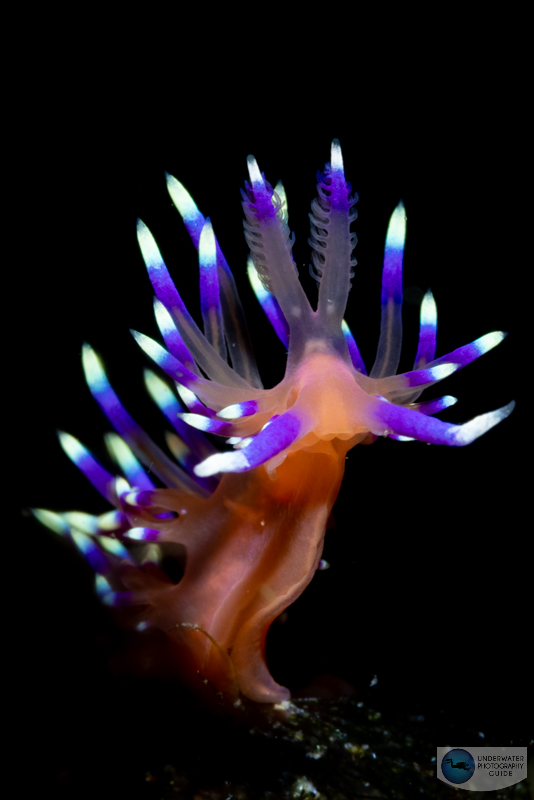
Canon Log Files
After editing a lot of Canon R5 and Sony A1 video, I feel like Canon's Log file options are subpar. For underwater scenes, especially in blue water, I feel as though it's better to shoot in the standard picture profile. I just don't get the same amount of detail recovery as I do with the Sony A1. That being said, the R5 does offer RAW capture straight in the camera which gives you a lot more leeway in post than Log files. Overall, it's pretty clear that the Sony A7S III and the Sony A1 are designed as video cameras and I would still consider the Canon R5 to be primarily a stills camera.
Thoughts on the Ikelite Canon R5 Housing
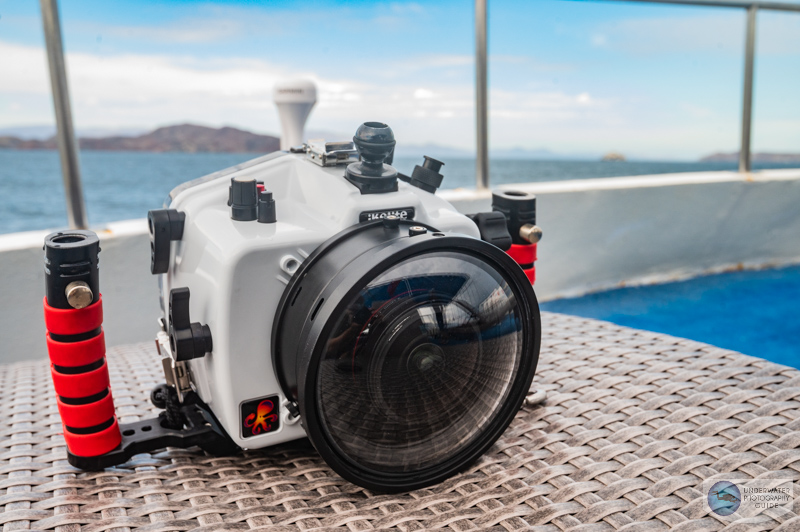
In full disclosure, Ikelite sent me a demo housing and then a production model to help with my reviews of the camera. They were sent back after I finished using them and Ikelite does not pay for any advertising. What I write in my review are my thoughts alone. I have an open invitation for any housing manufacturer to send me a demo housing to use for reviews.
Over the course of shooting Ikelite's first prototype Canon R5 housing to the final full production model, it's clear to me that their engineers have put a ton of thought into this housing throughout the production process. The action on the buttons seems to get tweaked with every model, and I think they got it just right with the R5 model. Each control functions pretty seamlessly - especially the dials which are the most important controls for the R5. I should note that the joystick control is not compatible with this housing. It doesn't affect functionality, but it does mean you have to get used to using your dials to control the camera with muscle memory. Eventually, it'll be faster to control the camera with dials, but it takes some time to get used to it.
What I like most about the Ikelite R5 housing is that it is extremely lightweight as a polycarbonate housing rather than aluminum. It's hydrodynamic, but there's also enough airspace for accessories (like HDMI cables) and plenty of buoyancy. In fact, I have never used floats with this housing.
Another control that I have noticed that has improved in Ikelite's housings recently is the on-off switch. The On-off switch on the R5 housing works seamlessly. In the past I have had trouble with them but definitely not with the R5.
Ikelite DL5 DS Link TTL Converter
With the Ikelite housing, I used the Ikelite DL5 DS Link TTL converter which was attached to both Ikelite DS-160s and the camera’s hotshoe. I was surprised with how efficient and accurate the TTL really was. Combined with the DS-161s ultra-fast recycle times, I highly recommend using the TTL converter if you’re going to do any burst shooting underwater. When you're burst shooting it almost feels like you have a machine gun and every shot you're hitting is dead-on accurate.
Conclusions
In the past year, the Canon R5 has aged like fine wine. For all its quirks, it is an absolutely incredible camera with features that are still groundbreaking today - like animal eye autofocus tracking and 8 stops of in-body image stabilization. I have been able to capture photos that I would have believed impossible in the past. But most importantly, my day-to-day shooting situation just got more pleasant all around. Despite constant innovation in the camera world, I think the R5 will remain a relevant camera in the years to come.
Updated: After working my R5 continuously and been very happy with the results, I have added the R5 Mark II to my camera bag, but still keeping the R5 as my back-up body. With the improvements in the new stacked sensor results in faster readout speeds, enhanced burst shooting, upgraded autofocus system, faster 8K video frame rates and professional-grade C-Log2 recording, it made sense to make the move to the Canon R5 Mark II after being so happy with the R5 these past few years.
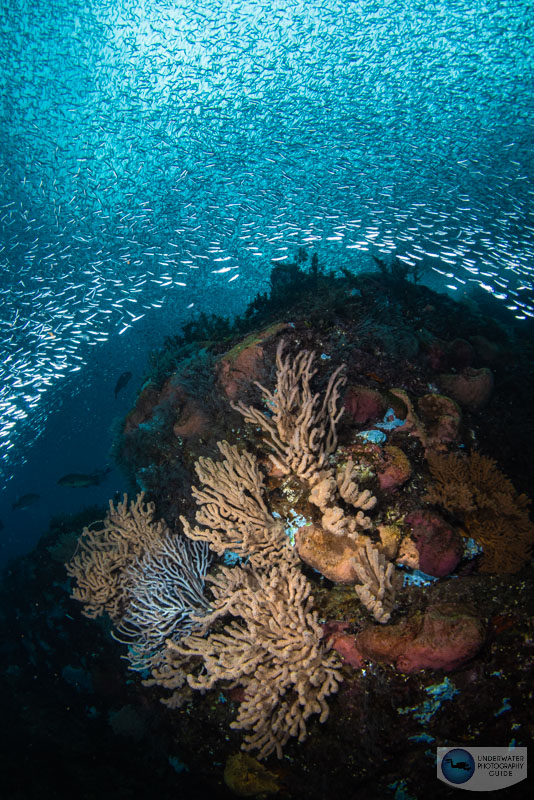
RECOMMENDED ARTICLES
SUPPORT THE UNDERWATER PHOTOGRAPHY GUIDE:
The Best Service & Prices on u/w Photo Gear
 Visit Bluewater Photo & Video for all your underwater photography and video gear. Click, or call the team at (310) 633-5052 for expert advice!
Visit Bluewater Photo & Video for all your underwater photography and video gear. Click, or call the team at (310) 633-5052 for expert advice!
The Best Pricing, Service & Expert Advice to Book your Dive Trips
 Bluewater Travel is your full-service scuba travel agency. Let our expert advisers plan and book your next dive vacation. Run by divers, for divers.
Bluewater Travel is your full-service scuba travel agency. Let our expert advisers plan and book your next dive vacation. Run by divers, for divers.




